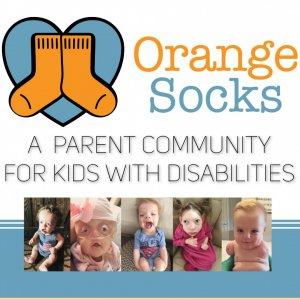Inspiring life despite a diagnosis

Sock Talk: All About The Special Olympics
In this episode, Dr. Gerald Nebeker dives into the history surrounding the formation of the Special Olympics. He also interviews Rebecca Ralston, who is the director of the Young Athletes Program of The International Special Olympics.
The history of Special Olympics
The Special Olympics was first started as a result of advocacy work through the Kennedy Foundation. Eunice Kennedy Shriver had a sibling with an intellectual disability. That relationship fostered the creation of a summer camp called ‘Camp Shriver.’ A camp that focused on the importance of physical exercise and activity. With help from the Kennedy Foundation, these camps were held throughout the nation.
A few years later, Ann McGlone Burke was given a grant from the Kennedy Foundation to create an activities based program for children with intellectual disabilities in the Chicago park district. The group participated in a city wide track meet. Gerald said, “Eunice loved the idea and asked Ann to enlarge the scope to include athletes from around the country.”
The first Special Olympics
July 20, 1968 the first olympic summer games were held at Soldier Field in Chicago Illinois. After a very successful event, in August of that same year, special olympics became incorporated. Eunice was one of the board of directors.
As of 2018, Gerald shared some staggering figures of the success it has become. He said, “That year there were 5,468,333 athletes, 106,003 competitions, 1,151,088 volunteers in 193 countries.” Talk about the impact it has had!
Helping more than those with disabilities
Rebecca Ralson, the director of the Young Athletes for the Special Olympics said, “Young Athletes is a program for two-to-seven year olds. Young children with and without intellectual disabilities, and it’s an inclusive play program.” They aim to use play to help children develop gross motor skills, social skills, cognitive skills, and learning skills.
They help children who might not have access to resources early in their life. Their program is in over 127 countries and has over 300,000 children participating. Another critical goal for the program is inclusion. Rebecca said, “Inclusion is really critical at this age. When you think about young children, you think about how they are developing. They aren’t really seeing differences, they don’t really have those preconceived prejudices or notions that maybe teenagers or adults might have towards an individual with an intellectual disability.”
Inclusion for children with disabilities
Using play as the tool to provide inclusion, they are able to create positive interactions between children with and without intellectual disabilities. Rebecca said that while play is a great medium to help promote inclusion, she said inclusion really should start in the home.
Special Olympics goal for people with disabilities
“The mission of Special Olympics is to provide year-round sports training and athletic competition in a variety of Olympic-type sports for children and adults with intellectual disabilities, giving them continuing opportunities to develop physical fitness, demonstrate courage, experience joy and participate in a sharing of gifts, skills and friendship with their families, other Special Olympics athletes and the community.”
Using the power of sports, they aim to shift the focus to what the athletes can do rather than what they can’t do.
Finding a Special Olympics near you
Gerald explained how to get involved in the Special Olympics. He said, “Go to their website, specialolympics.org, find the ‘Get Involved’ tab and click on, ‘Find a Program’ from the drop down menu. That tab also has information on becoming an athlete, coach, volunteer or to make a donation.






 Visit Podcast Website
Visit Podcast Website RSS Podcast Feed
RSS Podcast Feed Subscribe
Subscribe
 Add to MyCast
Add to MyCast